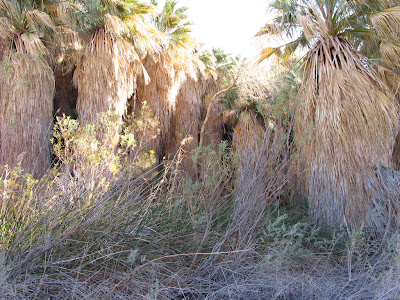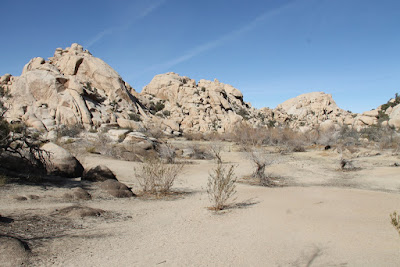The Coachella Valley Preserve has a collection of trails and oases that occupy the eastern side of valley and area that lies along the San Andreas Fault. There is a visitor center that has many photos of recent and pioneer history as well as many pictures of the wildlife you can expect to see. They have a website www.coachellavalleypreserve.org that has many of the same photos.
Our group hike out to McCallum Grove and pond and then walked a short loop trail south of the visitor center (smoke tree ranch) to visit a site of a palm tree fire from 2004. It was very impressive how much the trees have recovered. The hike was an easy 2.25 mile adventure.
 |
| Grove surrounding the visitors center |
 |
| An unfortunate Side-Blotched Lizard that has had it's tail removed by a predator. The tail will regrow. |
 |
| Lizards are very well coloured for hiding in their habitat. |
 |
| I had fun with the hiking group as they were asked to rub the branches between their fingers and have a smell. Roquefort cheese was the consensus which is why this bush is called the 'Cheesebush'. |
 |
| A very dry trail leading to the McCallum Grove |
 |
| Ocotillo in bloom and a close-up below of the plant's protection system |
 |
| McCallum Grove and pond |
 |
| We spotted a nest in the side of one of the fan palms and after talking to the host at the visitor center we think it belongs to a Great Horned Owl that has taken up residence at the grove. |
 |
| A shot looking up through the grove's canopy. |
 |
| This is a stump of the fan palm and you can see the fibrous rings that support the tree. It is amazing to watch these tree in a wind storm and wonder how they don't break off. |
 |
| The Smoke Tree looks like a plume of smoke when you are a distance away but when you get up close you see it is a mass of thorns. |
 |
| Young fan palms growing in the back drop of the surrounding hills. |










































